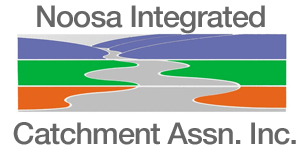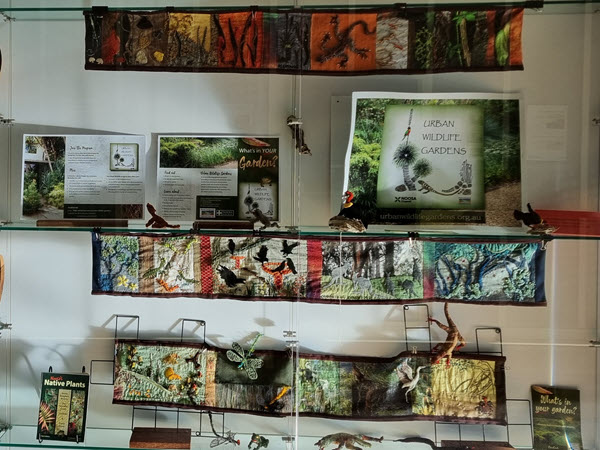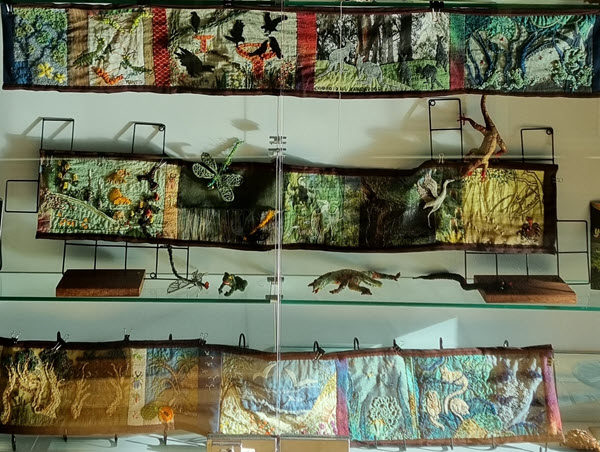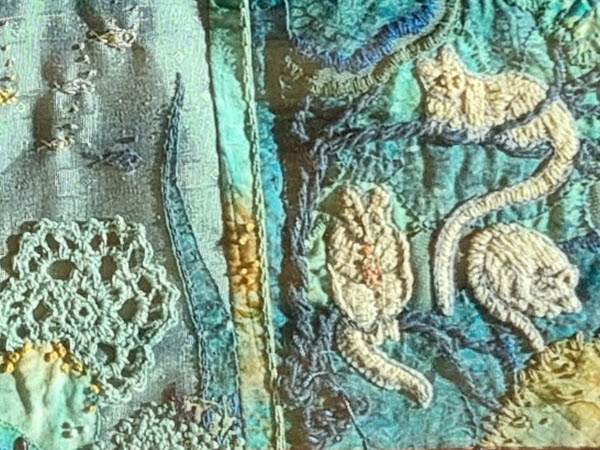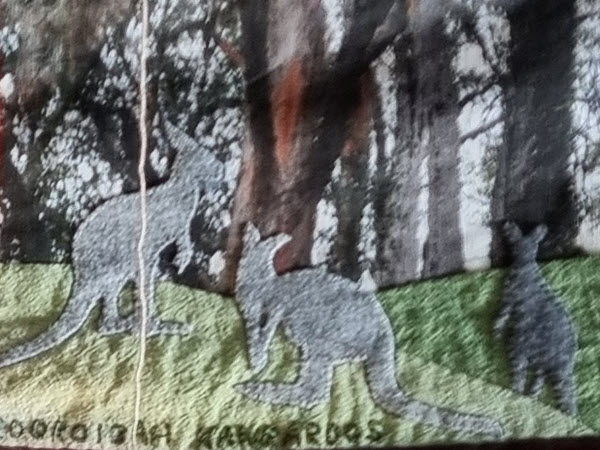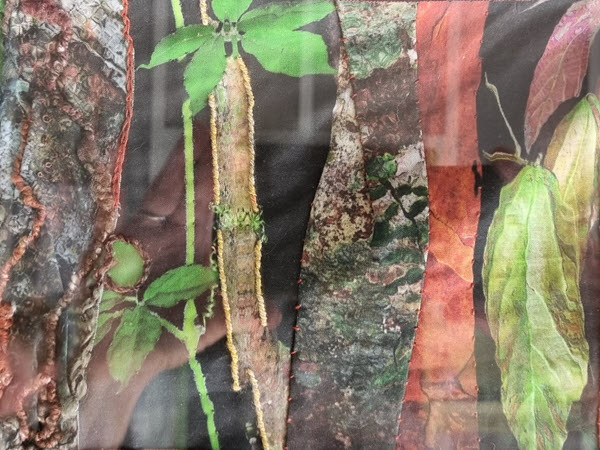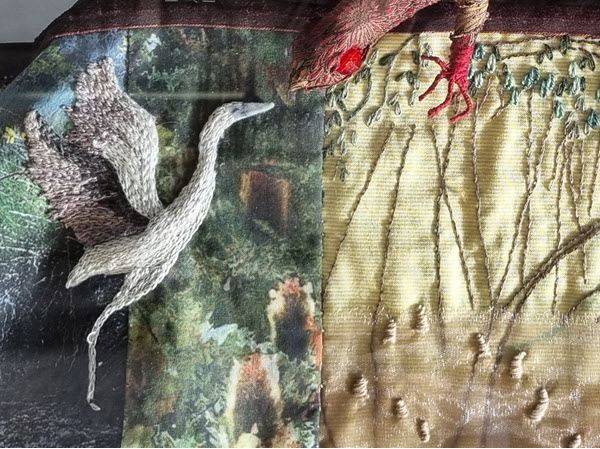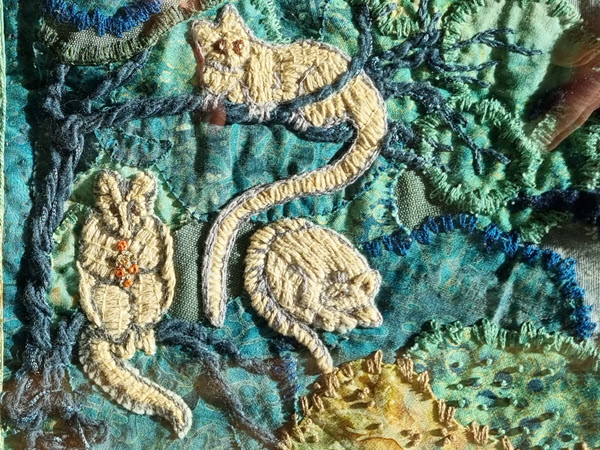Hopefully some of you have had the opportunity to see Stephanie’s beautiful Fabric Art which has been on display this month. I’m sure it has caught the eye of many other library visitors. In this article Stephanie shares thoughts about her inspiration and the techniques she uses to make her creations.
I think the project began a few months ago as an opportunity to experiment with techniques and colour combinations on small background panels. Originally I thought of making a sample book, but I’d been reading about the Bayeux Tapestry and liked the idea of telling a continuing story. What better theme than the stimulation of our local natural environment.
In my work I have attempted to replicate the shapes, textures and colours around me in my garden and the local bushland. This expanded to include other local environments including the beach, the paperbark forests and the river. I was not short of inspiration.
Each panel was constructed on a quilted calico pad roughly A4 in size, with joining strips and fillers. There was no ‘plan’. Each panel led on to the next idea. Eventually I joined them all together, lined and bound the result with some long-term thought of perhaps producing a scroll to wind on spindles.
The images were built up from my collection of scraps from past projects – detritus from a lifetime of sewing and playing with fabric and fibre construction.
Scraps of fabric were added: felt, netting, velvet, corduroy, silk, denim, plus crocheted motifs. There was much placing and unpicking. Yarns included embroidery threads, wool, string and fine wire, crocheted chains and plaits, held in place with couched stitching and surface embroidery. Colours were highlighted with strips torn from old fabric dyeing experiments.
I’m not sure how one panel became 20. They just evolved as I added insects and even some writing.
After my first brush with Covid, some gentle sewing has been an interesting exercise filling many hours when I had little energy for anything else.
